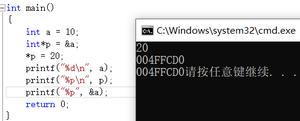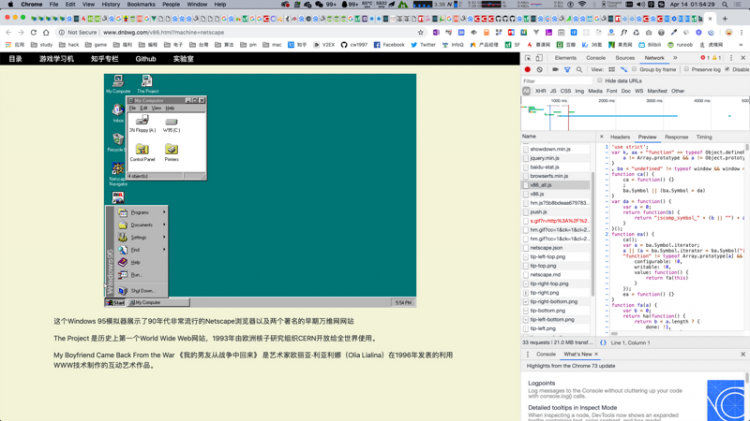面试必问的安卓虚拟机,你真的掌握了么?——安卓虚拟机基础知识回顾
前言
21世纪,安卓虚拟机正在一步步的走入我们的生活,小到个人部分朋友在电脑上使用安卓虚拟机玩手游,大到安卓从业人员在虚拟机上面跑程序。不得不承认,对于每一位Androider 而言,安卓虚拟机是我们日常开发中不可或缺的一环,但是关于安卓虚拟机的一些知识点和小细节你真的完全掌握了么?本文将就主要包括 dex file, oat file, mirror::Class, ArtField, ArtMethod, DexCache, ClassTable,这一块内容进行一个简单的概述和讨论,希望新手们多多学习,老手们温故而知新。
在这里,欢迎大家在评论区留下您的高见或者是提出疑问、异议,欢迎各位朋友前来讨论,互相交流,最后,如果觉得本文写的不错的朋友可以点个关注,咱们每日更新高质量Android进阶知识,欢迎指正。
dex2oat 触发场景
dex2oat 的作用:对 dex 文件进行编译,根据参数,生成 oat vdex art 文件。
各种文件
.dex
主要看下 class_def,class_def 代表的是类的基本信息,关键内容:
- class_idx/superclass_idx:string_id 的索引,类名字符串
interfaces_off:数组,对应的是实现的接口类型 id
- type_list -> type_item -> type_idx
class_data_off:所有成员变量和成员函数信息
- 定义、继承和实现的函数
- 除了 direct_methods 以外的
- static, private, constructor
- direct_methods
- virtual_methods
- class_data_item
code_item 是什么?
- code_item 存储的是 dex 中的字节码,用解释器来执行
DexFile:
DexFile(const uint8_t* base, size_t size,
const uint8_t* data_begin,
size_t data_size,
const std::string& location,
uint32_t location_checksum,
const OatDexFile* oat_dex_file,
std::unique_ptr<DexFileContainer> container,
bool is_compact_dex);
const Header* const header_;
const dex::StringId* const string_ids_;
const dex::TypeId* const type_ids_;
const dex::FieldId* const field_ids_;
const dex::MethodId* const method_ids_;
const dex::ProtoId* const proto_ids_;
const dex::ClassDef* const class_defs_;
// If this dex file was loaded from an oat file, oat_dex_file_ contains a
// pointer to the OatDexFile it was loaded from. Otherwise oat_dex_file_ is
// null.
mutable const OatDexFile* oat_dex_file_;
};
如果该 dex 是从一个 oat 文件里获取的,DexFile 中还包括一个 oat_dex_file 的指针,指向对于的 oat file。后面 loadClass 时会用到这个指针。
Dex 文件里保存的是符号引用,需要经过一次解析才能拿到最终信息,比如获取类的名称,需要通过 string_id 去 string_data 里找一下才知道。
DexCache 的存在就是为了避免重复解析。
.odex
DVM 上使用。
.odex 在 dex 文件前增加了 header 信息,后面增加了其他 dex 的依赖和一些辅助信息。
.oat
ART 上使用。
Oat 文件是一种特殊的 ELF 文件格式,它包含 dex 文件编译得到的机器指令,在 8.0 以下包括原始的 dex 内容,8.0 之后 raw dex 在 quicken 化之后是在 .vdex 里。
- oat data section 对应的是 dex 文件相关信息(8.0 之后在 .vdex 文件中)
- oat exec section 对应的是 dex 编译生成的机器指令
.vdex
- VerifierDeps 用于快速校验 dex 里 method 合法性
8.0 增加,目的是减少 dex2oat 时间
dex2oat::Setup():
// No need to verify the dex file when we have a vdex file, which means it was already // verified.
const bool verify =
(input_vdex_file_ == nullptr) && !compiler_options_->AssumeDexFilesAreVerified();
if (!oat_writers_[i]->WriteAndOpenDexFiles(
vdex_files_[i].get(),
verify,
update_input_vdex_,
copy_dex_files_,
&opened_dex_files_map,
&opened_dex_files)) {
return dex2oat::ReturnCode::kOther;
}
如果之前做过 dex2oat,有 vdex 文件,下次执行 dex2oat 时(比如系统 OTA)就可以省去重新 verify dex 的过程。
类信息
mirror::Class
// C++ mirror of java.lang.Classclass MANAGED Class final : public Object {
// Defining class loader, or null for the "bootstrap" system loader.
HeapReference<ClassLoader> class_loader_;
// 数组元素的类型
// (for String[][][], this will be String[][]). null for non-array classes.
HeapReference<Class> component_type_;
// 这个类对应的 DexCache 对象,虚拟机直接创建的类没有这个值(数组、基本类型)
HeapReference<DexCache> dex_cache_;
//接口表,包括自己实现的和继承的
HeapReference<IfTable> iftable_;
// 类名,"java.lang.Class" or "[C"
HeapReference<String> name_;
HeapReference<Class> super_class_;
//虚函数表,invoke-virtual 调用的函数,包括父类的和当前类的
HeapReference<PointerArray> vtable_;
//本类定义的非静态成员,不包括父类的。
uint64_t ifields_;
/* [0,virtual_methods_offset_):本类的direct函数
[virtual_methods_offset_,copied_methods_offset_):本类的virtual函数
[copied_methods_offset_, ...) 诸如miranda函数等 */
uint64_t methods_;
// Static fields length-prefixed array.
uint64_t sfields_;
uint32_t access_flags_;
uint32_t class_flags_;
// Total size of the Class instance; used when allocating storage on gc heap
uint32_t class_size_;
// Tid used to check for recursive <clinit> invocation.
pid_t clinit_thread_id_;
static_assert(sizeof(pid_t) == sizeof(int32_t), "java.lang.Class.clinitThreadId size check");
// ClassDef index in dex file, -1 if no class definition such as an array.
int32_t dex_class_def_idx_;
// Type index in dex file.
int32_t dex_type_idx_;
};
Class 成员变量比较多,重点关注这几个:
iftable_:
- 接口类所对应的 Class 对象
- 该接口类中的方法。
- 保存该类直接实现或间接实现(继承)的接口信息
- 接口信息包含两个部分
vtable_:
- 保存该类直接定义或间接定义的 virtual 方法
- 比如Object类中的wait、notify、toString 等方法
methods_:
- 只包含本类直接定义的 direct、virtual 方法和 Miranda 方法
- 一般 vtable_ 包含内容会多于 methods_
- sfields_ 静态变量
ifields_ 实例变量
- ClassLinker::LoadClass 阶段分配内存和设置数据
ArtField
class ArtField { GcRoot<mirror::Class> declaring_class_;
uint32_t access_flags_ = 0;
// 在 dex 中 field_ids 数组中的索引
uint32_t field_dex_idx_ = 0;
//成员变量的offset
uint32_t offset_ = 0;
}
一个 ArtField 对象代表类中的一个成员变量。
offset_ 含义:
- 如果是静态成员变量,offset_ 代表变量的存储空间在 Class 对象的内存布局里的起始位置
- 如果是非静态成员变量,offset_ 代表在 Object 对象的内存布局里的起始位置
ArtMethod
ArtMethod 代表一个运行在 Android Runtime 中的 Java 侧的方法,主要结构:
class ArtMethod { protected:
GcRoot<mirror::Class> declaring_class_;
std::atomic<std::uint32_t> access_flags_;
//在 dex file 中的位置
// Offset to the CodeItem.
uint32_t dex_code_item_offset_;
//在 dex 中 method_id 的 index,通过它获取名称等信息
uint32_t dex_method_index_;
/* End of dex file fields. */
// static/direct method -> declaringClass.directMethods
// virtual method -> vtable
// interface method -> ifTable
uint16_t method_index_;
// 调用一次加一,超过阈值可能会被编译成本地方法
uint16_t hotness_count_;
// Fake padding field gets inserted here.
// Must be the last fields in the method.
struct PtrSizedFields {
//方法入口地址
void* entry_point_from_quick_compiled_code_;
} ptr_sized_fields_;
}
这个 entry_point 是在 ClassLinker#LinkCode 时设置的入口,后面执行这个方法时,不论是解释执行还是以本地机器指令执行,都通过 ArtMethod 的 GetEntryPointFromCompiledCode 获取入口点。
缓存
ClassTable
每个 ClassLoader 有一个 class_table_,它的成员主要是一个 ClassSet vector:
ClassTable: // Lock to guard inserting and removing.
mutable ReaderWriterMutex lock_;
// We have a vector to help prevent dirty pages after the zygote forks by calling FreezeSnapshot.
std::vector<ClassSet> classes_ GUARDED_BY(lock_);
// Hash set that hashes class descriptor, and compares descriptors and class loaders. Results
// should be compared for a matching class descriptor and class loader.
typedef HashSet<TableSlot,
TableSlotEmptyFn,
ClassDescriptorHashEquals,
ClassDescriptorHashEquals,
TrackingAllocator<TableSlot, kAllocatorTagClassTable>> ClassSet;
通过 ClassLinker::InsertClass 插入到 ClassTable 中
ClassLinker::InsertClassTableForClassLoader
- ClassLinker::RegisterClassLoader 创建 ClassTable
void ClassLinker::RegisterClassLoader(ObjPtr<mirror::ClassLoader> class_loader) { CHECK(class_loader->GetAllocator() == nullptr);
CHECK(class_loader->GetClassTable() == nullptr);
Thread* const self = Thread::Current();
ClassLoaderData data;
data.weak_root = self->GetJniEnv()->GetVm()->AddWeakGlobalRef(self, class_loader);
// Create and set the class table.
data.class_table = new ClassTable;
class_loader->SetClassTable(data.class_table);
// Create and set the linear allocator.
data.allocator = Runtime::Current()->CreateLinearAlloc();
class_loader->SetAllocator(data.allocator);
// Add to the list so that we know to free the data later.
class_loaders_.push_back(data);
}
调用处:
FindClass 时会调用 LookupClass 查询:
ObjPtr<mirror::Class> ClassLinker::LookupClass(Thread* self, const char* descriptor,
size_t hash,
ObjPtr<mirror::ClassLoader> class_loader) {
ReaderMutexLock mu(self, *Locks::classlinker_classes_lock_);
ClassTable* const class_table = ClassTableForClassLoader(class_loader);
if (class_table != nullptr) {
ObjPtr<mirror::Class> result = class_table->Lookup(descriptor, hash);
if (result != nullptr) {
return result;
}
}
return nullptr;
}
DexCache
DexCache 保存的是一个 Dex 里解析后的成员变量、方法、类型、字符串信息。
// C++ mirror of java.lang.DexCache.class MANAGED DexCache final : public Object {
HeapReference<ClassLoader> class_loader_;
// 对应的 dex 文件路径
HeapReference<String> location_;
uint64_t dex_file_; // const DexFile*
uint64_t preresolved_strings_; // GcRoot<mirror::String*> array
uint64_t resolved_call_sites_; // GcRoot<CallSite>* array
//field_idx
uint64_t resolved_fields_; // std::atomic<FieldDexCachePair>*
uint64_t resolved_method_types_; // std::atomic<MethodTypeDexCachePair>*
uint64_t resolved_methods_; // ArtMethod*,
uint64_t resolved_types_; // TypeDexCacheType*
uint64_t strings_; // std::atomic<StringDexCachePair>*
uint32_t num_preresolved_strings_;
uint32_t num_resolved_call_sites_;
uint32_t num_resolved_fields_;
uint32_t num_resolved_method_types_;
uint32_t num_resolved_methods_;
uint32_t num_resolved_types_;
uint32_t num_strings_;
}
什么时候创建和读取呢?
- 在 ART 中每当一个类被加载时,ART 运行时都会检查该类所属的 DEX 文件是否已经关联有一个 Dex Cache。如果还没有关联,那么就会创建一个 Dex Cache,并且建立好关联关系。
DefineClass:
ObjPtr<mirror::DexCache> dex_cache = RegisterDexFile(*new_dex_file, class_loader.Get()); if (dex_cache == nullptr) {
self->AssertPendingException();
return sdc.Finish(nullptr);
}
klass->SetDexCache(dex_cache);
结尾
好了,今天有关安卓虚拟机的内容就到此为止了,感谢各位看官,喜欢的朋友可以点赞,收藏,评论,当然,如果能给我个关注那就最好不过了,这样的话就不会错过我的日更投稿哦,你的支持就是我最大的动力,感谢各位,那么我们明天见。
以上是 面试必问的安卓虚拟机,你真的掌握了么?——安卓虚拟机基础知识回顾 的全部内容, 来源链接: utcz.com/z/267666.html







